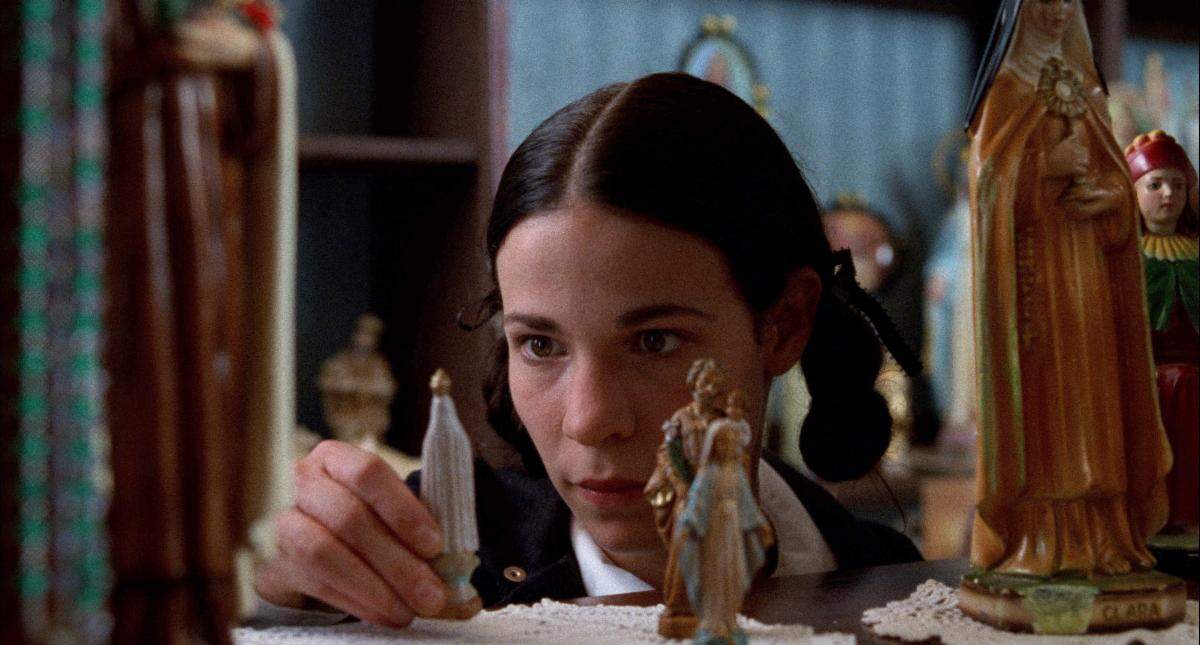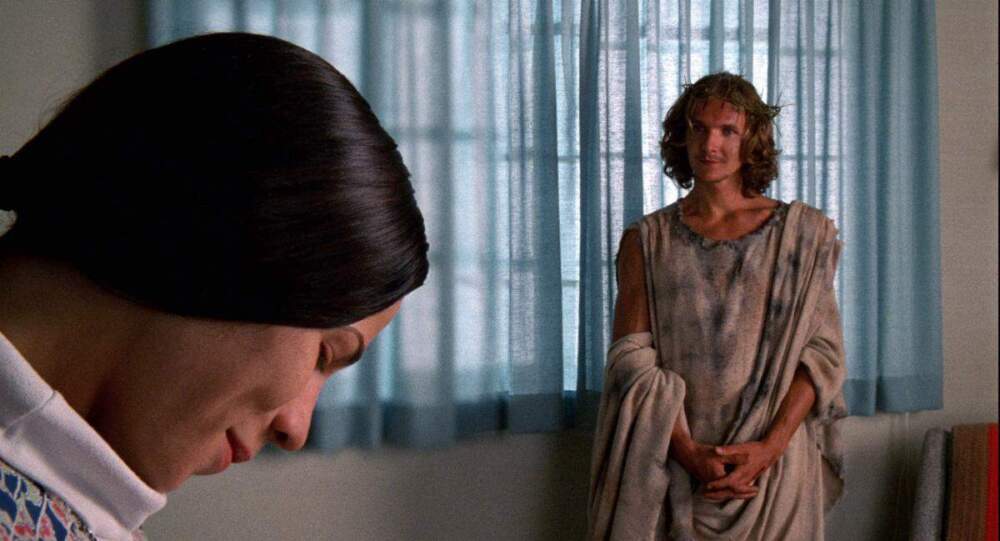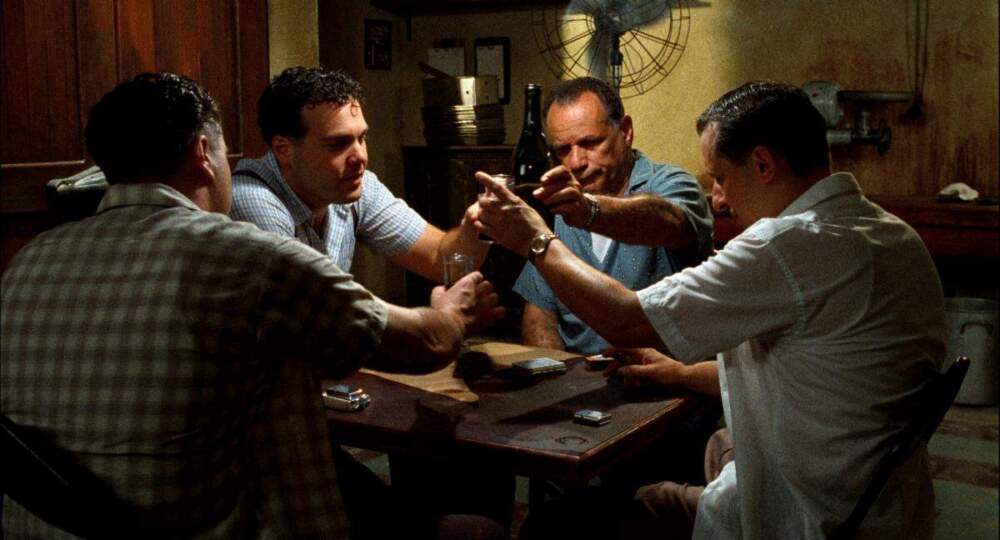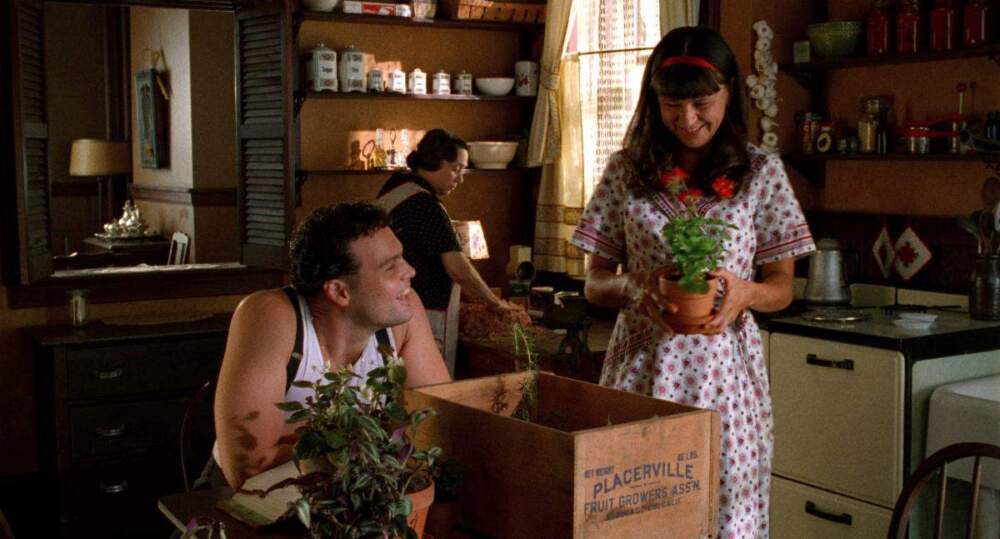Advertisement
Review
Saved from obscurity, Nancy Savoca's 1993 film 'Household Saints' is back on the big screen

“And it happened by the grace of God that Joseph Santangelo won his wife in a pinochle game.”
So begins “Household Saints,” director Nancy Savoca’s mysterious and wryly funny 1993 adaptation of Francine Prose’s novel. Spanning the late 1940s to the early 1970s on the sidewalks of New York’s Little Italy, it’s the tale of an immigrant community’s assimilation over time, with customs and superstitions from the old country falling away in favor of a new, uniquely American notion of postwar progress. Yet certain ideas and traditions seem to stubbornly persist across the generations, most of them embodied in the character of Teresa Santangelo, played with a beatific smile by the brilliant Lili Taylor. She’s a selfless young woman modeling herself after her namesake, St. Thérèse of Lisieux, looking for God’s glory in an increasingly secular world. Visited by a blonde-haired, blue-eyed Jesus while ironing her boyfriend’s shirts, Teresa could be a modern day saint. Or she might be mentally ill.

It doesn’t really make much difference either way in Savoca’s generous, warmly idiosyncratic picture, which finds miracles in the everyday and vice versa. Full of oddball digressions and magic realist flights of fancy, the film has the loose, expansive nature of a neighborhood legend, like a rambling tall tale passed down and embellished from one generation to the next. “Household Saints” is a jewel from an era that turned out to be a treasure trove for American independent cinema, yet for the longest time you couldn’t see it anywhere. Like a lot of indies from the 1980s and ‘90s, the film was financed by a patchwork of limited investment partnerships and released by a distributor that no longer exists. Because of such complicated ownership issues, “Household Saints” never made it to DVD, and when Savoca and her co-writer, producer and husband Richard Guay were invited to screen the picture somewhere a few years ago, they could find no playable 35mm prints.
It took more than two years to sort out the rights to who actually owned “Household Saints” so that Savoca and Guay could buy it back, and nearly as long to locate enough elements for the beautiful new 4K restoration that the filmmakers will be bringing to the Brattle Theatre for a three-day run, Jan. 5-Jan. 7. Their arduous search was the impetus for Missing Movies, a foundation of industry professionals, archivists and fans dedicated to rescuing an alarming number of independent films that have fallen through the cracks. (The 2022 reissue of Mira Nair’s “Mississippi Masala” was another of their success stories, with Hector Bebenco’s “Kiss of the Spider Woman” reportedly on the way.) It seems crazy that movies so relatively recent could be in very real danger of being gone for good, but with studio executives now in the practice of destroying completed pictures for tax write-downs, who’s left to look out for cinema history besides filmmakers and fans?
The Brattle engagement is a sort of homecoming for “Household Saints,” which had its area premiere at the theater in the fall of 1993. I saw the film around the same time, as a wet-behind-the-ears freshman at New York University’s film school, when distinguished alum Savoca hosted a screening for our class shortly before it was released. This was the first time I attended a Q&A with an actual famous movie director, so getting to see Savoca present the restoration 30 years later at this past September’s New York Film Festival was the kind of full circle moment that could have been straight out of “Household Saints” itself, a story full of uncanny echoes and scenarios that repeat over the decades we spend following the Santangelo family.

Like that pinochle game, for instance. The film begins on an uncharacteristically sweltering autumn evening in 1949, when blustery butcher shop owner Joseph Santangelo — played by a beefy young Vincent D’Onofrio in a formidable array of undershirts — convinces his drunk neighbor Lino Falconetti (archetypal New York character actor Victor Argo) to put up his daughter’s hand in marriage on a bet. Santangelo draws a miraculous set of cards, the kind that makes everyone assume he cheated. But as his late father Enzo advises during a late night visit from somewhere beyond, “Man deals. God stacks the deck.”
The butcher’s prize is played shockingly well by British-American comedienne Tracy Ullman, who modeled the character’s speaking voice on her director’s Bronx accent. Catherine Falconetti is a mousy wallflower who can’t cook — much to the horror of Joseph’s cruel and meddlesome mother (Judith Malina) — but love doesn’t always make a whole lot of sense. Our young Santangelo is smitten, and we watch this initially awkward courtship stretch out comfortably into marriage and middle age, when their daughter Teresa’s ecclesiastical ambitions become a concern. But “Household Saints” is the kind of film for which a plot synopsis feels like a fool’s errand, as the picture’s pleasures lie in its lived-in textures, unexpected asides and recurring motifs. Suffice it to say, there’s another pinochle game near the end of the movie, but I wouldn’t dare tell you who’s cheating this time.
Advertisement

The daughter of Sicilian and Argentine Catholic immigrants, Savoca knows this world inside and out. She and Guay’s fantastic first feature, the 1989 Sundance prizewinner “True Love,” chronicled the chaotic wedding preparations of a young Italian-American couple in then-contemporary New York City with an anthropological eye and a John Cassavetes-esque flair for letting scenes spill out into unusual shapes. (Again, like so many indies of this era, the film is aggravatingly unavailable to stream. I just bought an old, out-of-print, full frame DVD.) “Household Saints” is an odder and more ambitious picture, one with a very specific visual sensibility.
There are miracles in the movie, but Savoca and cinematographer Bobby Bukowski shoot them matter-of-factly, using lo-fi camera tricks from the early days of cinema instead of expensive special effects. The most lavish moves accompany the most ordinary occasions, with the daily preparation of meats and sausage meriting the kind of crane maneuvers other movies would save for an action climax. The point is that you can waste your time waiting to hear from Our Lady of Fátima, but meanwhile, minor key miracles are happening all around us every day. Flowers, food, friendship — the stuff of regular life looks exalted through the right lens, if you’re ready and willing to see it that way.
It’s a miracle that a movie this strange and wonderful got made at all, and another miracle that it was rescued and restored.
“Household Saints” screens at the Brattle Theatre from Friday, Jan. 5 through Sunday, Jan. 7. Nancy Savoca and Richard Guay will do a Q&A following Friday’s 6:15 p.m. screening and introduce Saturday’s noon screening. Additionally, Martina Savoca-Guay’s documentary “The Many Miracles of Household Saints” screens Saturday, Jan. 6, at 2:45 p.m. followed by Nancy Savoca’s NYU shorts “Renata” and “Bad Timing” with actors Marianne Leone and Chris Cooper in attendance.
